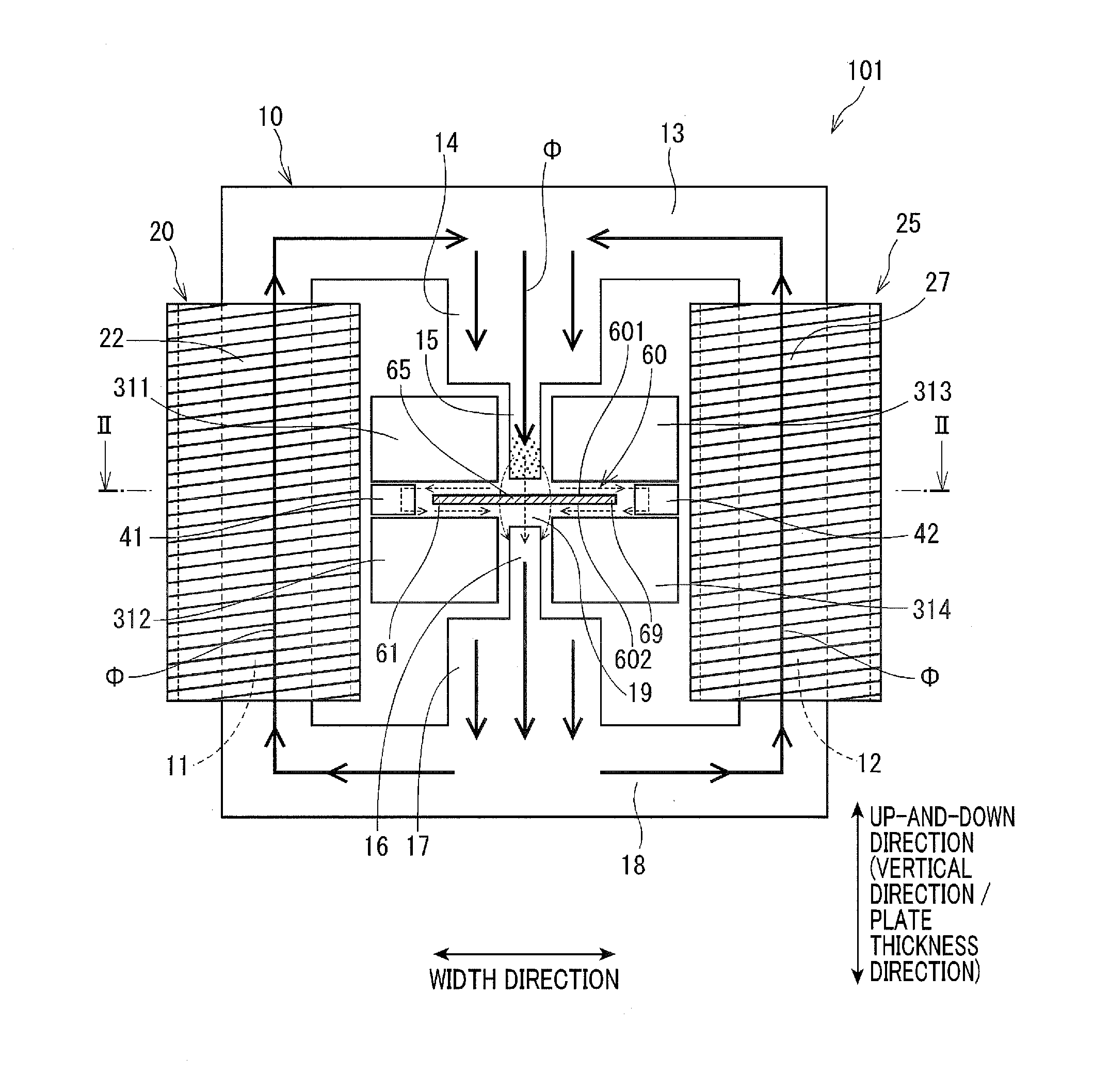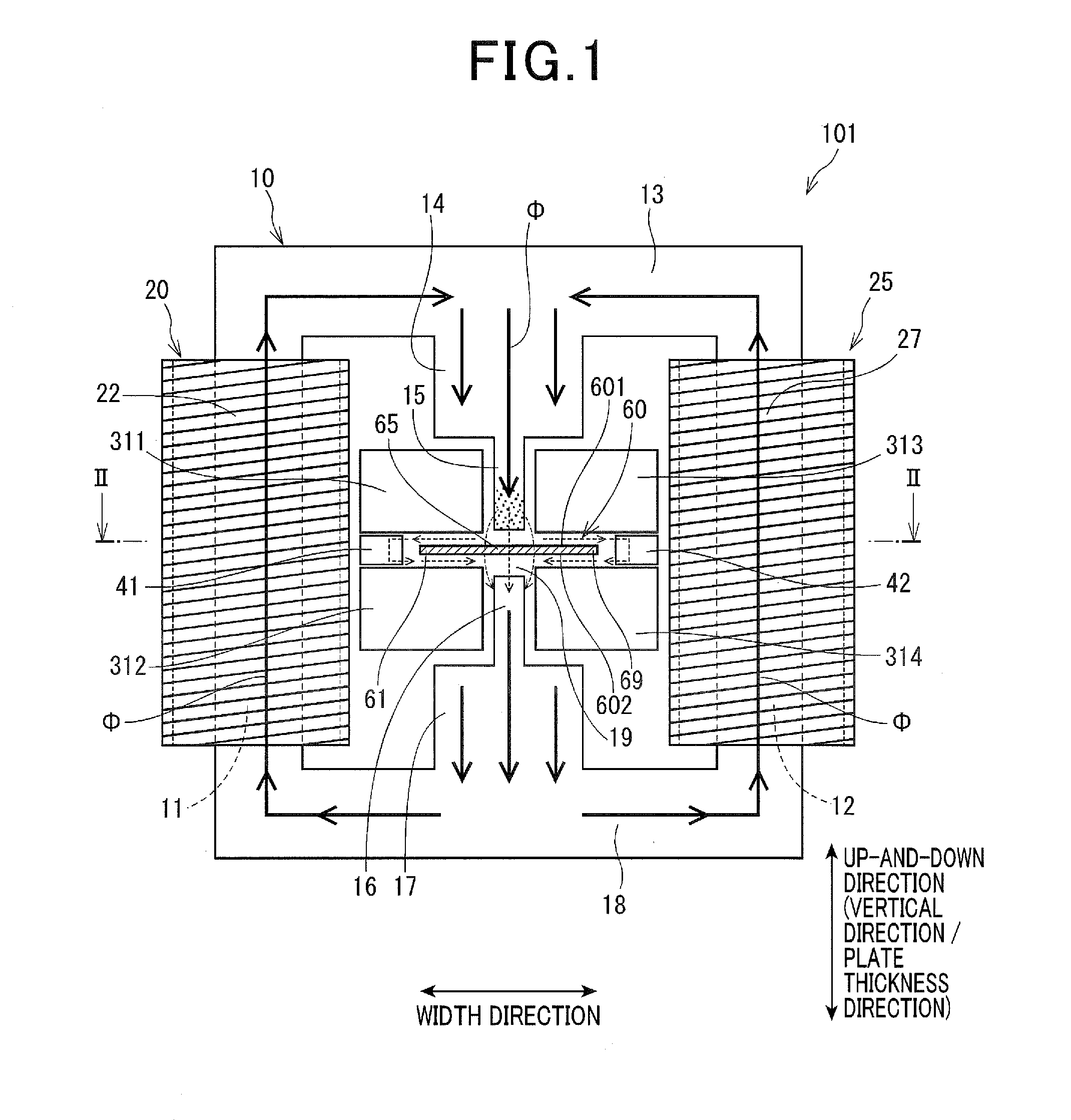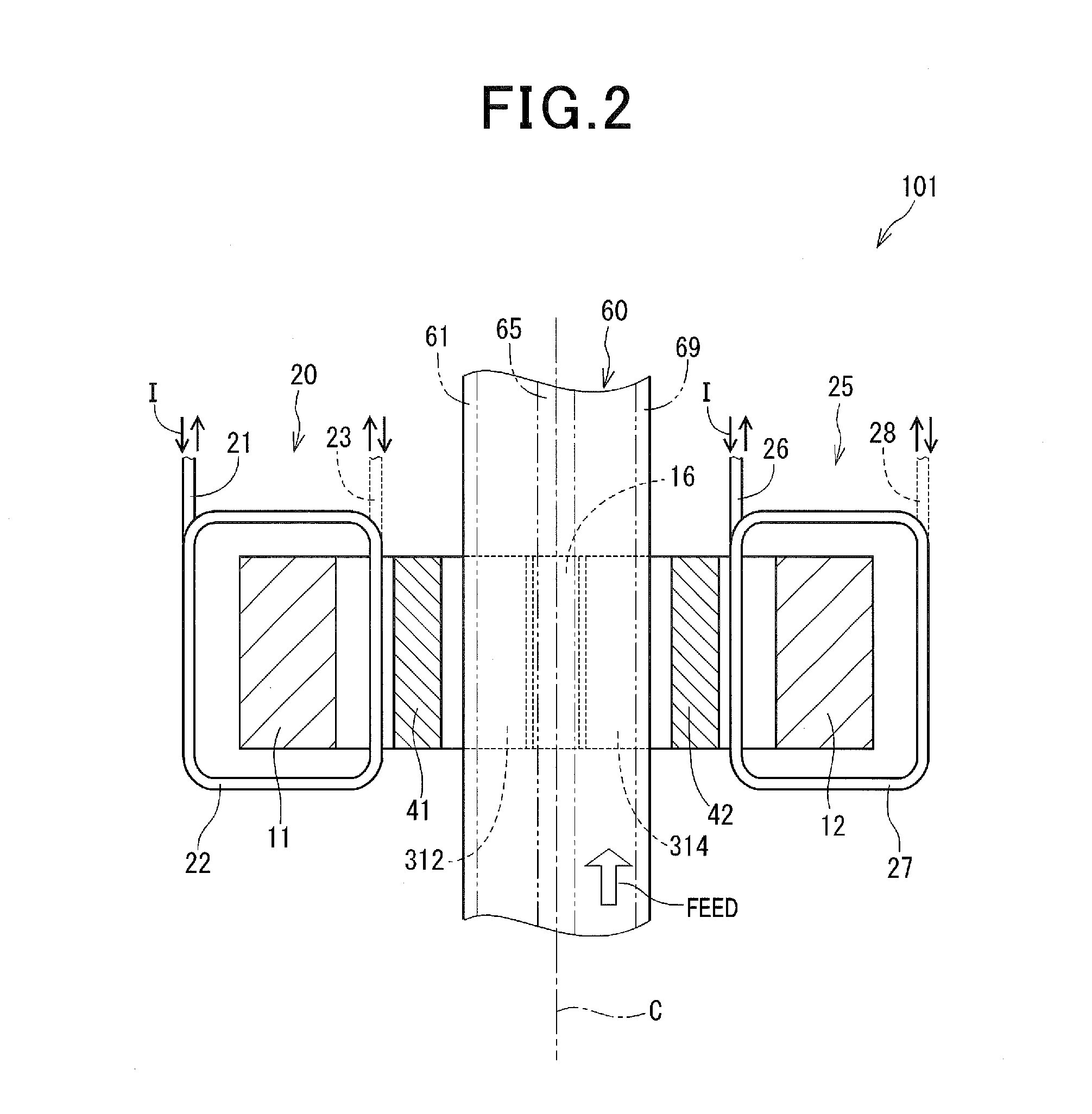Induction heating apparatus
- Summary
- Abstract
- Description
- Claims
- Application Information
AI Technical Summary
Benefits of technology
Problems solved by technology
Method used
Image
Examples
first embodiment
[0030]Referring to FIGS. 1 to 3, an induction heating apparatus of a first embodiment of the present invention is described.
[0031]As shown in FIGS. 1 to 3, an induction heating apparatus 101 is a device that heats an electrically conductive plate-like heating object 60 (i.e., an object being heated). In the present embodiment, the induction heating apparatus is set up, with the vertical direction in FIG. 1 as being a vertical direction (plate thickness direction).
[0032]The heating object 60 is set so that its principal plate surfaces 601 and 602 reside in a horizontal direction. The “principal plate surfaces” herein refers to surfaces which are subjected to heating. When the heating object 60 is a plate of a substantially rectangular parallelopiped shape, the principal plate surfaces refer to the front and back surfaces having the largest area, i.e. the front and back surfaces (both side surfaces or both surfaces) in a plate thickness direction (in the following description, both si...
second embodiment
[0076]As shown in FIG. 5, an induction heating apparatus 102 of the second embodiment includes a pseudo N pole 51 and a pseudo S pole 52 having ends whose position and shape are different from those of the magnetic poles 15 and 16 of the first embodiment.
[0077]The magnetic pole 51 is provided so that the position of an end 511 is located near the principal plate surface 601 of the heating object 60, relative to an end face 301 of a conductor 321 or 323. The magnetic pole 52 is provided so that the position of an end 522 is located near the principal plate surface 602 of the heating object 60, relative to an end face 302 of a conductor 322 or 324. The magnetic poles 51 and 52 are formed with chamfered portions 515 and 526, respectively, so that the respective ends 511 and 522 are tapered.
[0078]Thus, induction current is also generated in portions corresponding to shadows of the magnetic poles 51 and 52 cast on the principle plate surfaces 601 and 602, respectively, i.e. portions 651 ...
third and fourth embodiments
[0080]As shown in FIG. 6, an induction heating apparatus 103 of the third embodiment is provided with a plurality of magnetic poles on each principal plate surface side of the heating object 60. That is, magnetic poles 51 and 53 are provided on a principal plate surface 601 side, while magnetic poles 52 and 54 are provided on a principal plate surface 602 side.
[0081]On the principal plate surface 601 side, a conductor 331 is provided on an edge portion 61 side relative to the magnetic pole 51 so as to be adjacent to the magnetic pole 51 and in contact with the lateral magnetic member 41. Similarly, a conductor 333 is provided on an edge portion 69 side relative to the magnetic pole 53 so as to be adjacent to the magnetic pole 53 and in contact with the lateral magnetic member 42. Further, a conductor 335 is provided between the magnetic poles 51 and 53 so as to extend along the principal plate surface 601.
[0082]Similarly, conductors 332, 334 and 336 are provided on the principal pla...
PUM
 Login to View More
Login to View More Abstract
Description
Claims
Application Information
 Login to View More
Login to View More - Generate Ideas
- Intellectual Property
- Life Sciences
- Materials
- Tech Scout
- Unparalleled Data Quality
- Higher Quality Content
- 60% Fewer Hallucinations
Browse by: Latest US Patents, China's latest patents, Technical Efficacy Thesaurus, Application Domain, Technology Topic, Popular Technical Reports.
© 2025 PatSnap. All rights reserved.Legal|Privacy policy|Modern Slavery Act Transparency Statement|Sitemap|About US| Contact US: help@patsnap.com



